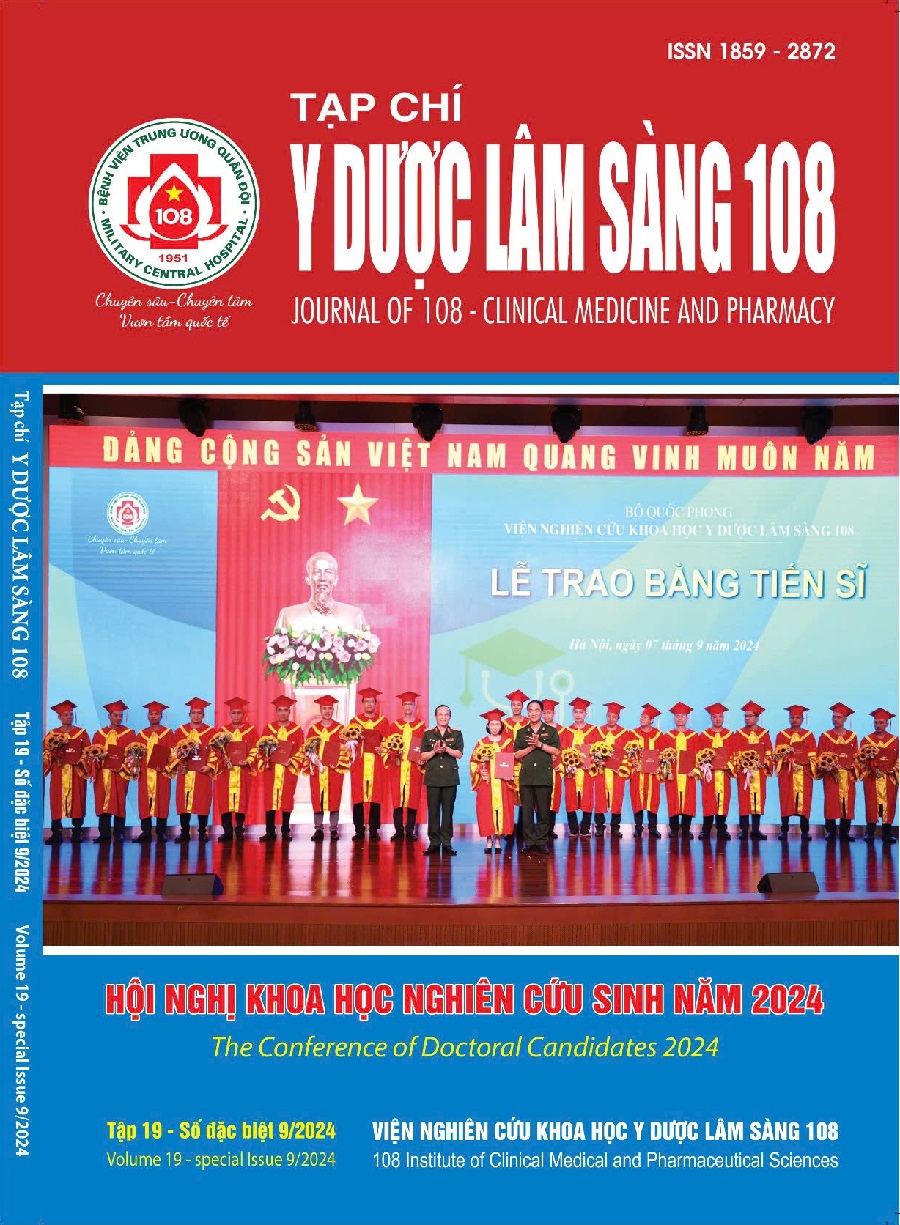Features of kidney impairment based on KDIGO classification in patients with type 2 diabetes under treatment at 103 Military Hospital
Main Article Content
Keywords
Abstract
Objective: Survey kidney impairment rate and features based on the 2012 KDIGO classification in type 2 diabetes patients treated as outpatients at the Examination Department of 103 Military Hospital from October 2019 to March 2020. Subject and method: Prospective, cross-sectional study design evaluation of 192 type 2 diabetes diagnosis candidates based on 2016 American Diabetes Association criteria. Result: The average glomerular filtration rate was 78.86 ± 18.27ml/min/1.73m2. The average albumin-creatinine ratio was 9.74 ± 21.97 (mg/mmol), with a 39.6% abnormal rate. The MAU was 32.3% and the MAC was 7.3%. The proportion of patients at risk of developing end-stage chronic kidney disease was 45.3%, which was divided into three categories: Low risk (29.5%), medium risk (9.3%), and high risk (6.2%). Conclusion: Early assessment of the risk of developing end-stage chronic kidney disease, according to KDIGO 2012, is essential in adjusting treatment strategies in patients with type 2 diabetes to prevent complications of diabetic kidney disease.
Article Details
References
2. American Diabetes Association (2020) 11. Microvascular Complications and Foot Care: Standards of Medical Care in Diabetes-2020. Diabetes Care 43(Suppl 1):S135-S151.
3. Trần Thị Ngọc Thư (2012) Nghiên cứu Microalbumin niệu và một số yếu tố nguy cơ ở bệnh nhân đái tháo đường týp 2. Trường Đại học Y dược Huế.
4. American Diabetes Association (2018) 2. Classification and Diagnosis of Diabetes: Standards of Medical Care in Diabetes-2018. Diabetes Care 41(Suppl 1):S13-S27. doi: 10.2337/dc18-S002.
5. Tạ Văn Bình (2006) Bệnh đái tháo đường. Tăng Glucose máu. Nhà xuất bản Y học Hà Nội
6. Dunkler D, Gao P, Lee SF et al (2015) Risk prediction for early CKD in type 2 diabetes. Clin J Am Soc Nephrol 10(8): 1371-1379.
7. Hà Thị Hồng Cẩm (2013) Nghiên cứu giá trị của chỉ số Albumin/creatinin nước tiểu trong chẩn đoán biến chứng thận ở bệnh nhân đái tháo đường týp 2. Trường Đại học Y Hà Nội.
8. Đỗ Quốc Thiên Hương (2014) Nghiên cứu lâm sàng, cận lâm sàng, biến chứng thận ở bệnh nhân cao tuổi mắc bệnh đái tháo đường typ 2 tại tỉnh Bình Dương. Học viện Quân Y.
9. Hà Hoàng Kiệm (2010) Thận học lâm sàng. Nhà xuất bản Y học.
10. Bộ Y tế (2015) Hướng dẫn chẩn đoán và điều trị một số bệnh thận - tiết niệu. Hà Nội. tr. 36-46.
11. Floege J, Barbour SJ, Cattran DC, Hogan JJ, Nachman PH, Tang SCW, Wetzels JFM, Cheung M, Wheeler DC, Winkelmayer WC, Rovin BH; Conference Participants (2019) Management and treatment of glomerular diseases (part 1): Conclusions from a Kidney Disease: Improving Global Outcomes (KDIGO) Controversies Conference. Kidney Int 95(2): 268-280.
12. Võ Tam (2012) Hướng dẫn thực hành lâm sàng của KDOQI 2012 về bệnh thận mạn đái tháo đường. Available from: http://tietnieuthanhochue.com/?cat_id=87&id=194.
 ISSN: 1859 - 2872
ISSN: 1859 - 2872
